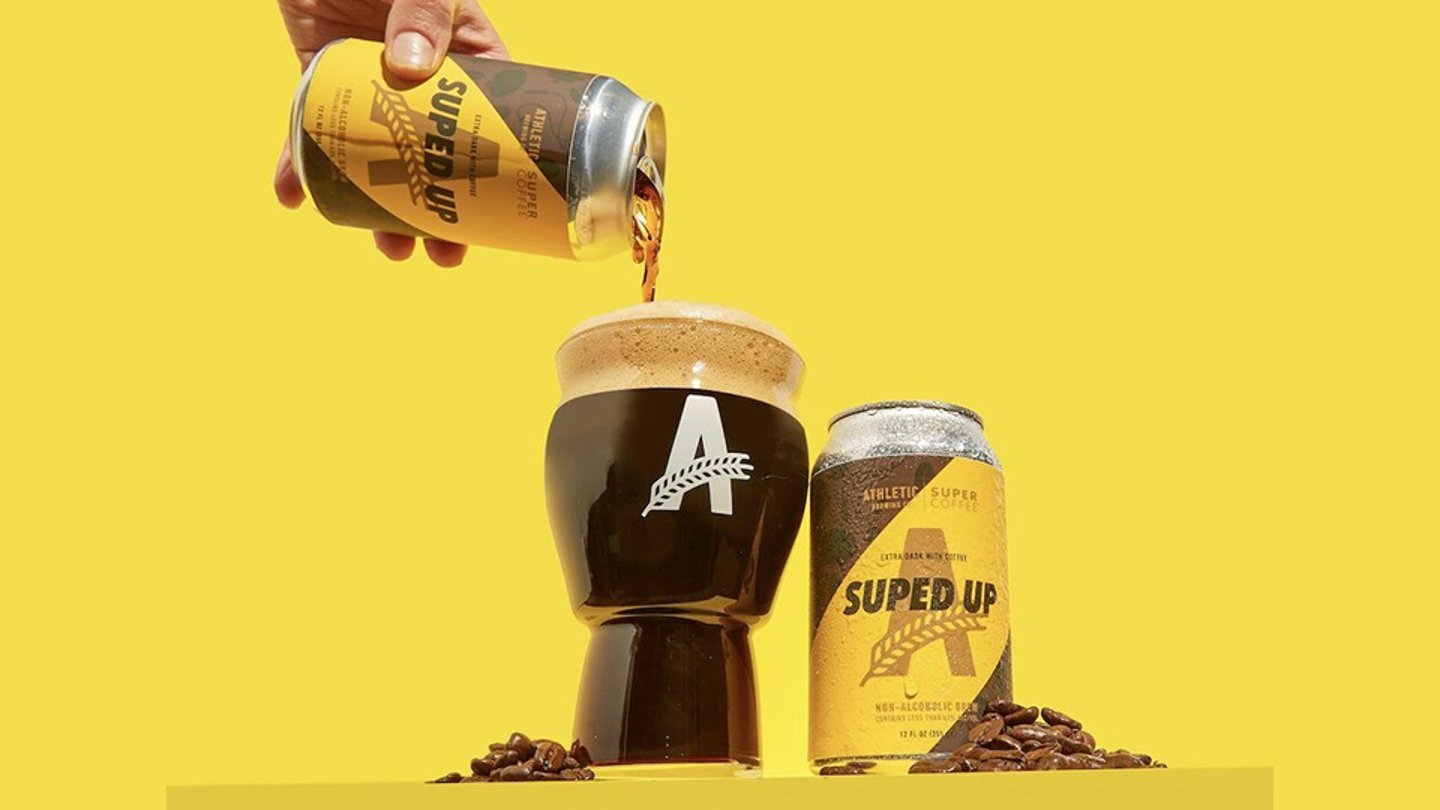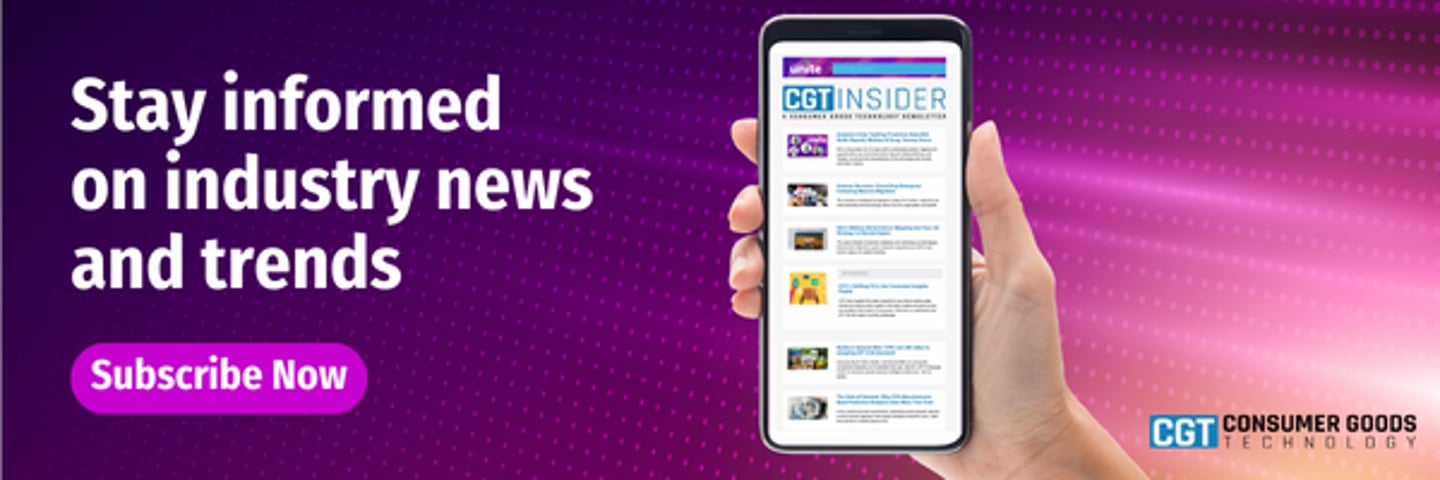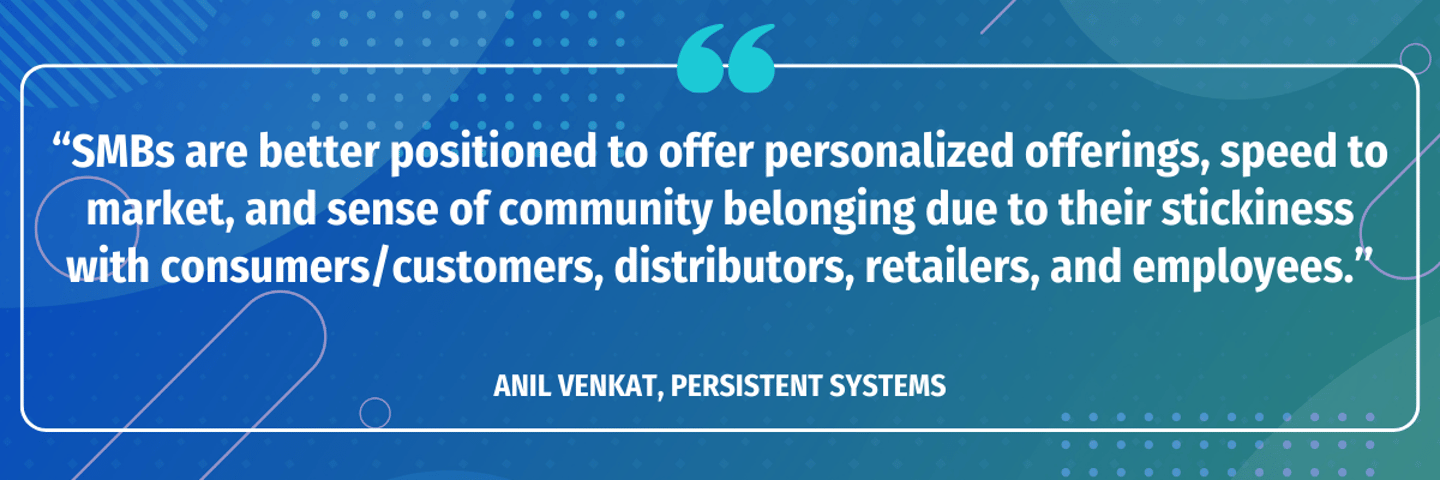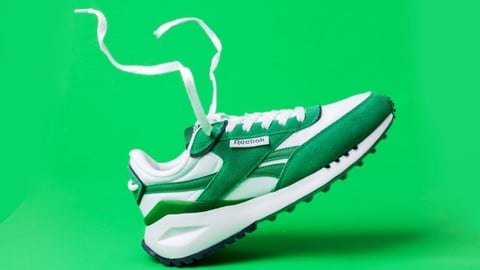3 Challenges for CPG SMBs (and How Today’s Brands Ride the Wave)
Bigger doesn’t always mean better. In fact, within the consumer goods industry, it often translates into quicker success thanks to less red tape, more agility, and intimate customer relationships.
It’s rare to find a brand that doesn't want to scale, however, and the tech selection and implementation processes is an evolving growing pain. The smaller size doesn’t mean a hesitancy toward investment: SMBs represent half of overall tech spending in the U.S., according to McKinsey & Company.
What’s more, these investments are expected by IDC to increase over the next 10 years, and the research firm forecast a spike in SMB IT investments as they “lean into technology” to strengthen operations and foster continued growth.
- See also: Meet 6 Standout Consumer Goods Brands
“Compared to enterprises, SMBs are better positioned to offer personalized offerings, speed to market, and sense of community belonging due to their stickiness with consumers/customers, distributors, retailers, and employees,” Anil Venkat, SVP at Persistent Systems, an IT consultant for SMB CPGs, tells CGT.
As a result, they can bring faster deployment and adoption of new technologies in everything from product design to marketing to supply chain optimization.
IT teams sit on the front lines of this journey, and there are several common challenges that can be identified among SMB CPGs.
What Is an SMB?
It’s worth noting that multiple definitions of SMBs exist. Circana’s Marshal Cohen notes to CGT that the technical definition is usually a business with one or two locations or under 1,000 employees. Gartner further defines a small business as one with less than $50 million in annual revenue, while midsize is an organization making over $50 million, but under $1 billion.
Within the consumer goods industry, some solution providers break this down even further. UpClear, which provides revenue management services to CPG SMBs, refers to them as “growing” and “established” brands: Established brands generate around $2 billion, while growing are under $500 million. The company also works with a subset of brands with revenue under $100 million that it refers to as “emerging” brands.
Challenge 1: Keeping Up With Big Bro
The biggest tech challenge for SMBs is simply keeping pace and gaining equal footing with their outsized counterparts when so many can't build the same tools, says Marshal Cohen, Circana chief retail advisor. “They usually need to job-out next-gen tech and growth opportunities.”
Mike Small, CFO at digitally native skincare brand OZNaturals, notes that it’s common for companies in early growth stages to ignore their infrastructure and fail to properly build scalable and responsive systems.
“In the early days, they depend upon throwing more labor at an issue, and in explosive growth periods, the companies don’t think they need to invest,” he says. This in turn prompts the need for quick, and often disparate, fixes when challenges arise, making integration more difficult down the road.
Smaller companies mean leaner IT teams that are often structured differently, or even outsourced. As a result, SMB commercial teams may be the ones shouldering tech review, purchase, deployment, and maintenance — on top of their existing responsibilities, says Kurt Kaiser, business development director at UpClear, which works with consumer goods SMBs like Blue Diamond Growers, King’s Hawaiin, and Spindrift, in addition to giants like Danone and Reckitt.
- See also: 5 Brands to Open Up Shop
“This can lead to deferring tech initiatives because of business-as-usual priorities,” he notes.
In staffing for technology, luxury goods company Hammitt prefers to hire employees who can work with the technology they’re using instead of forcing a fit the other way around. CEO Tony Drockton says they’ve found it’s more effective to stage processes around what the tech is already driving.
“For somebody that’s never worked in an ERP, they don’t understand what you need to do first, second, and third [to] really power performance,” he says. “But once people buy into it, you can really go fast.”
Challenge 2: Supply Chain Resiliency
During the pandemic, having access to a sprawling supply chain meant manufacturers could shift operations to the plants that were the least impacted by closures and labor shortages. For companies with small footprints, this workaround often wasn’t an option.
“Externalities often create larger challenges in SMB than large CG companies,” says Kaiser. “SMBs generally have less control over their supply chain than their larger brethren. Thus, issues — tech or otherwise — can be big business disruptions."
Day-to-day operations are impacted by keeping pace in a more complex world that includes shipping timing, advances in product technology, and product development, notes Cohen. As a result, less control over the supply chain means a greater need for actionable data through the organization.
- See also: CGT’s 2022 Standout SMBs
To accomplish this, board game manufacturer USAopoly partnered with analytics provider Alloy.ai to connect its sell-through data from retail and e-commerce with its internal inventory and supply chain data, helping it develop and execute more responsive plans via accurate and easily accessible data.
“You need to really look at what your retailers have on hand, what your retailers are selling, and think like a buyer would think,” says Eric Richardson, USAopoly’s manager of forecasting and data analytics. “Because when you’re trying to understand the supply chain and forecast the supply chain, what you’re doing is trying to understand how the end consumer is going to buy a product. You have to understand exactly how the buyer thinks, how they’re looking at the data, and what metrics they’re looking at.”
Challenge 3: Measuring ROI
Organizations measure ROI differently, and smaller consumer goods companies are often working on shorter evaluation timelines than their bigger brethren. SMB maturity is still lacking on measurement of ROI as compared to enterprises, says Persistent Systems’ Venkat.
“It is still viewed as a delivery or cost function,” he says, noting that SMBs are willing to invest, but typically in select areas that drive operational efficiency or business-as-usual activities especially around the back-office functions.
This challenge with measuring ROI can also prove to be an opportunity, as SMBs can have a faster understanding of the value.
For example, Athletic Brewing Company is 99% on cloud and has no on-premise infrastructure, which IT director Dan Miller says keeps them agile. “We can throw something at the wall, see if it sticks, and if it doesn't, we can pull it down because it's just a SaaS, [and] move on to something else.”
As companies scale and evolve from growth mode to profitability, their definition of ROI often evolves along with it. Greater profitability requires a better understanding of performance in addition to achieving gains in efficiency.
“As a brand migrates to a profitability strategy, the return expectation continues to include the day-to-day activities, but it adds a much more strategic lens to decision-making requirements,” says UpClear’s Kaiser. “As growth levels off, brands must make more difficult, profit-driven decisions. This is facilitated by more sophisticated business intelligence that enables understanding the ‘why’ of business performance in addition to ‘what’ has happened.”
Better Living Through Partnerships
To be sure, there’s no lack of partners — both large and small — to help SMBs navigate these challenges and more. Just how much they want to lean into and bundle their services depends upon their priorities.
As Traeger Grills grew through the pandemic, it wanted to provide more consistent customer service experiences; to do so, it chose to develop a unified relationship with AWS that consolidated many of its previous outsourced solutions. Now, the consumer goods company has also become an early partner for AWS’s generative AI technologies for use in its customer service.
For Athletic Brewing Company, its on-cloud strategy means the company tends to favor short-term contracts with solution providers so they can prove their effectiveness, according to Miller, and the company works with multiple providers, including AWS and Google.
Beyond the big players, there’s more resources than ever for SMBs to bolster their tech stacks, says Circana’s Cohen. “The business of supplying SMBs with technology and infrastructure to keep pace has become a nice partnership — SMBs to help SMBs.”
As one such provider, UpClear’s Kaiser notes that as SMBs invest in their technology, it becomes hard to return to the old way of doing things.
“We have found a couple of things to be true in SMB. First, when people have used tech before, a manual ‘system’ doesn’t make sense to them. They don’t want to go back to this,” he says. “Second, when SMB business leaders get the benefit of tech — fast, detailed visibility to their business — they wish they would have had it sooner.”
Indeed, this ability to retain an innovative mindset is critical for today’s SMBs to maintain a competitive advantage.
“Innovation and uniqueness are what separates businesses today,” stresses Cohen. “Small businesses can compete with big businesses if they keep pace and look big.”










